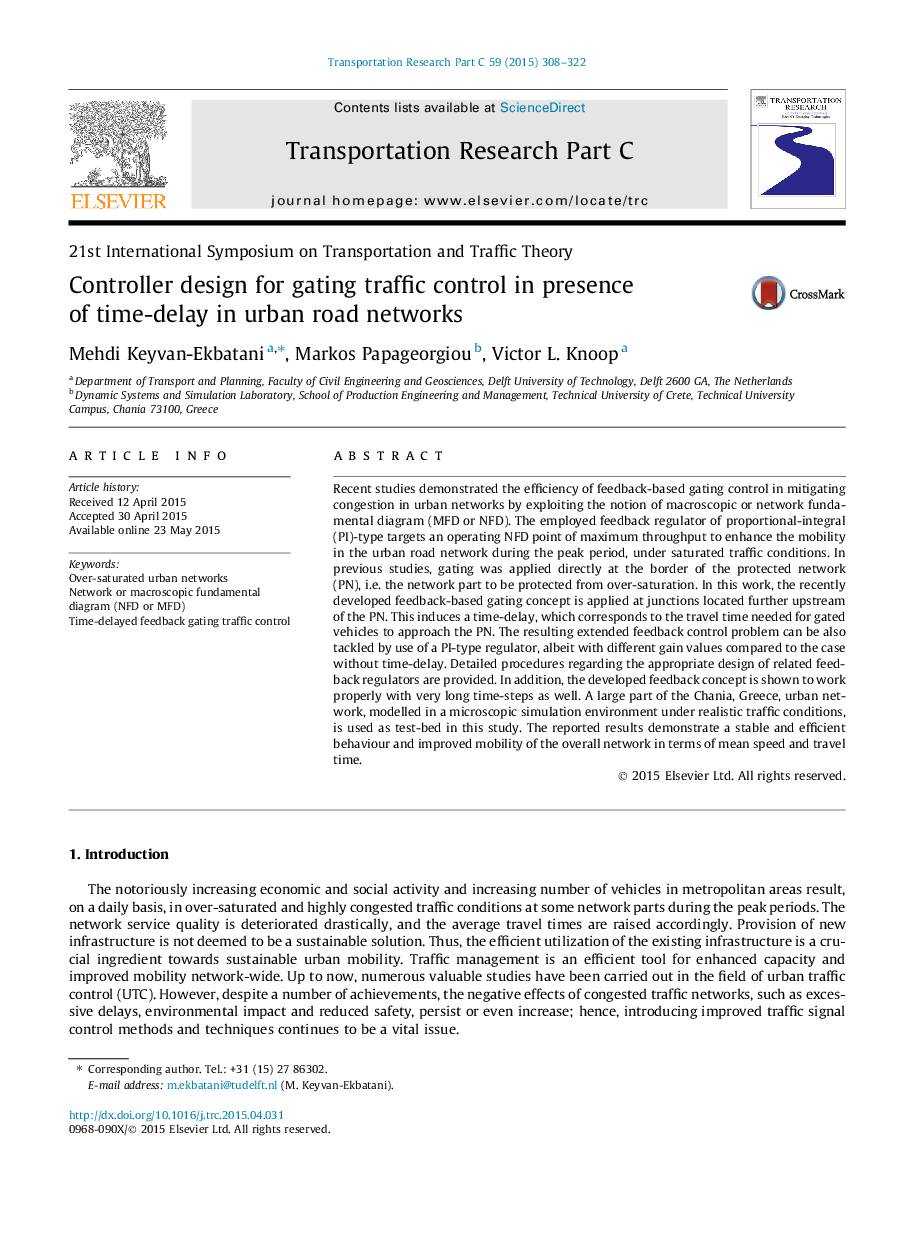| Article ID | Journal | Published Year | Pages | File Type |
|---|---|---|---|---|
| 524872 | Transportation Research Part C: Emerging Technologies | 2015 | 15 Pages |
•A data-based approach for identification of a SISO linear first-order time-delay model is proposed.•Novel design rules for a PI-type regulator for the gating problem (with and without time delays) are derived.•The developed concepts are exploited to test the impact of increased sample times on gating performance.
Recent studies demonstrated the efficiency of feedback-based gating control in mitigating congestion in urban networks by exploiting the notion of macroscopic or network fundamental diagram (MFD or NFD). The employed feedback regulator of proportional-integral (PI)-type targets an operating NFD point of maximum throughput to enhance the mobility in the urban road network during the peak period, under saturated traffic conditions. In previous studies, gating was applied directly at the border of the protected network (PN), i.e. the network part to be protected from over-saturation. In this work, the recently developed feedback-based gating concept is applied at junctions located further upstream of the PN. This induces a time-delay, which corresponds to the travel time needed for gated vehicles to approach the PN. The resulting extended feedback control problem can be also tackled by use of a PI-type regulator, albeit with different gain values compared to the case without time-delay. Detailed procedures regarding the appropriate design of related feedback regulators are provided. In addition, the developed feedback concept is shown to work properly with very long time-steps as well. A large part of the Chania, Greece, urban network, modelled in a microscopic simulation environment under realistic traffic conditions, is used as test-bed in this study. The reported results demonstrate a stable and efficient behaviour and improved mobility of the overall network in terms of mean speed and travel time.
